Bar fitness, the practice of incorporating barbells into your workout routine, has experienced a surge in popularity. This is due, in no small part, to its versatility and effectiveness in building strength, power, and muscle mass. From CrossFit to Olympic weightlifting, bar fitness offers a wide array of workout styles to suit different goals and fitness levels.
This guide will explore the fundamentals of bar fitness, including equipment, techniques, and safety considerations. We’ll delve into the various types of bar workouts, examine how to tailor them to your specific fitness goals, and address the importance of nutrition and injury prevention.
The Rise of Bar Fitness
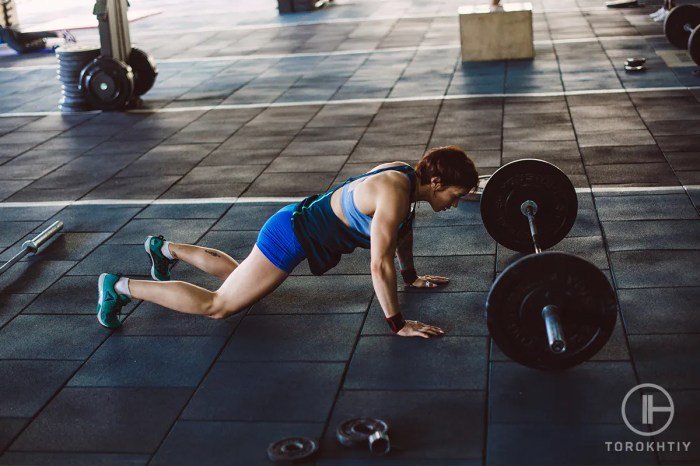
Bar fitness, incorporating exercises using barbells, has experienced a surge in popularity, becoming a prominent force in the fitness world. This trend is driven by the diverse benefits it offers, from building strength and muscle to enhancing overall fitness.
Benefits of Bar Fitness
Bar exercises engage multiple muscle groups simultaneously, leading to a more efficient and effective workout. This compound movement approach promotes a greater calorie burn, resulting in improved body composition and increased metabolism. Bar exercises also enhance core strength and stability, contributing to improved posture and reduced risk of injuries.
Examples of Bar Exercises
Bar exercises encompass a wide range of movements, catering to various fitness goals. Here are some examples:
- Squats:This compound exercise targets the quads, glutes, and hamstrings. Variations include front squats, back squats, and goblet squats, each emphasizing different muscle groups and requiring varying levels of technique.
- Deadlifts:This exercise engages numerous muscle groups, including the back, glutes, hamstrings, and forearms. It promotes overall strength and power, improving functional movements.
- Bench Press:This exercise targets the chest, shoulders, and triceps, building upper body strength and definition.
- Overhead Press:This exercise strengthens the shoulders, upper back, and triceps, improving overall upper body strength and stability.
- Barbell Rows:This exercise engages the back, biceps, and forearms, promoting back strength and muscle growth.
These examples highlight the versatility of bar fitness, offering exercises suitable for individuals of all fitness levels.
Types of Bar Fitness Workouts
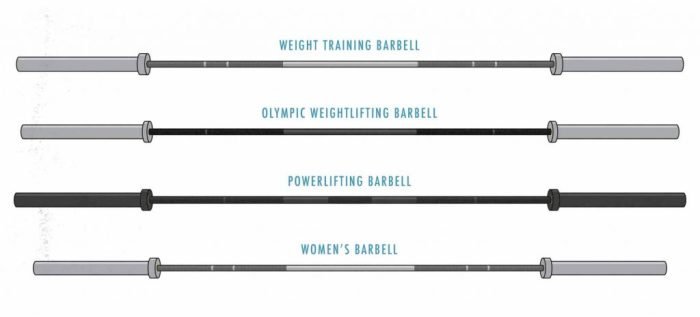
Bar fitness encompasses a wide range of workout styles that utilize barbells as the primary tool for building strength, power, and muscle mass. These workouts are designed to challenge your body in various ways, promoting overall fitness and athletic performance.
CrossFit
CrossFit is a high-intensity workout program that combines elements of weightlifting, gymnastics, and metabolic conditioning. It emphasizes functional movements, constantly varied workouts, and high intensity.
- Goals:CrossFit aims to improve overall fitness, strength, power, endurance, flexibility, and cardiovascular health.
- Intensity:Workouts are typically short, intense, and involve high repetitions with moderate weights. They are often performed in a group setting, fostering a competitive and supportive environment.
- Techniques:CrossFit utilizes a wide range of exercises, including barbell lifts like squats, deadlifts, presses, and cleans, as well as gymnastics movements like pull-ups, dips, and handstand push-ups. Proper technique is crucial to prevent injuries and maximize results.
- Popular Programs:CrossFit gyms offer a variety of programs, including CrossFit Open, CrossFit Games, and CrossFit Level 1 Trainer Certification.
Olympic Weightlifting
Olympic weightlifting focuses on two specific lifts: the snatch and the clean and jerk. These lifts require explosive power, speed, and coordination, developing overall strength and athleticism.
- Goals:Olympic weightlifting aims to maximize power output and develop explosive strength, crucial for athletes in various sports.
- Intensity:Training involves lifting heavy weights for a limited number of repetitions, focusing on technique and power development. Workouts are typically structured around the two main lifts, with supplementary exercises to support overall strength and mobility.
- Techniques:Olympic weightlifting requires precise technique, emphasizing proper form and coordination to maximize lifting efficiency. Coaches play a crucial role in guiding athletes and ensuring proper technique.
- Popular Programs:USA Weightlifting, International Weightlifting Federation, and various Olympic weightlifting clubs offer programs and resources for athletes of all levels.
Powerlifting
Powerlifting focuses on three main lifts: squat, bench press, and deadlift. It emphasizes maximal strength development, pushing the limits of how much weight an individual can lift in each lift.
- Goals:Powerlifting aims to develop maximal strength in the squat, bench press, and deadlift, pushing the limits of human strength.
- Intensity:Training involves lifting heavy weights for low repetitions, focusing on maximizing strength gains in each lift. Workouts are structured around the three main lifts, with supplementary exercises to support overall strength and muscle growth.
- Techniques:Powerlifting emphasizes proper technique and form to maximize weight lifted and prevent injuries. Athletes focus on maximizing their strength in each lift through specific training programs and coaching.
- Popular Programs:Powerlifting federations like USAPL, IPF, and WPC offer competitions and resources for athletes of all levels.
Essential Equipment for Bar Fitness
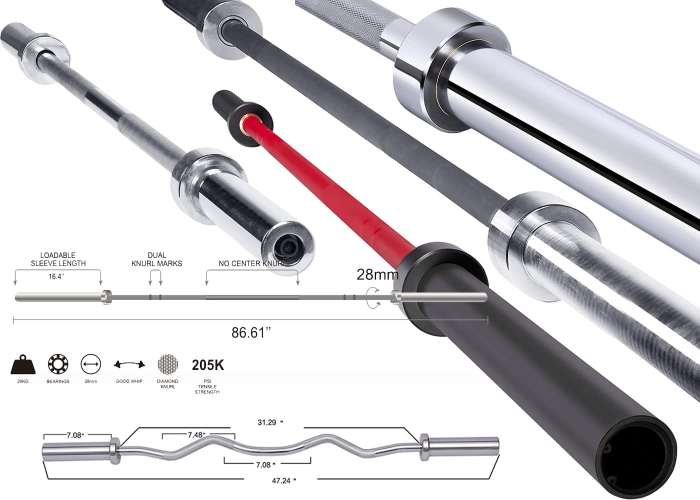
Bar fitness, with its focus on compound movements and heavy lifting, necessitates a specific set of equipment to execute exercises safely and effectively. While a home gym can be tailored to individual needs and preferences, there are essential pieces of equipment that form the foundation for a comprehensive bar fitness routine.
Types of Barbells
The barbell is the cornerstone of bar fitness, serving as the primary tool for a wide range of exercises. Understanding the different types of barbells and their suitability for various exercises is crucial for maximizing your training potential.
- Standard Barbells:These are the most common type, typically weighing 45 pounds (20.4 kg) and featuring a 7-foot (2.1-meter) length. They are versatile and suitable for a wide range of exercises, including squats, deadlifts, bench presses, and overhead presses. Standard barbells are typically made from steel and come in various finishes, such as chrome, black oxide, and zinc.
- Olympic Barbells:Designed for weightlifting competitions, Olympic barbells are slightly longer (7 feet 1.5 inches) and have a slightly larger diameter than standard barbells. They also feature knurling, which provides a secure grip, and collars that lock the weight plates in place.
Olympic barbells are typically made from high-quality steel and are often coated with a black oxide finish for durability.
- Power Barbells:These barbells are shorter than standard barbells (5 feet) and are designed for powerlifting movements like squats, deadlifts, and bench presses. Their shorter length makes them more stable and allows for a wider stance, which is beneficial for powerlifting techniques.
Power barbells are typically made from thicker steel than standard barbells, which increases their durability and strength.
- Trap Bar:Also known as a hex bar, the trap bar is a unique barbell that features a hexagonal frame. This design allows the user to stand inside the frame, making it a safer and more comfortable option for deadlifts and other pulling exercises.
Trap bars are also useful for people with back pain or limited mobility, as they distribute the weight more evenly across the body.
Essential Equipment for Bar Fitness
To establish a solid foundation for bar fitness, several essential pieces of equipment are crucial.
- Barbell:As discussed previously, a barbell is the foundation of any bar fitness routine. The type of barbell you choose will depend on your training goals and the exercises you plan to perform. For a comprehensive home gym, a standard barbell is a versatile option.
Bar fitness, with its focus on compound movements and functional strength, can be a great way to achieve a well-rounded physique. It’s interesting to note that the cast of American Beauty, cast of american beauty , showcased a diverse range of body types, highlighting the fact that fitness is a personal journey.
Whether you’re aiming for sculpted muscles or simply improved overall fitness, incorporating bar exercises into your routine can be a rewarding experience.
- Weight Plates:Weight plates are essential for loading the barbell and increasing the resistance of your exercises. A good set of weight plates should include a variety of sizes, ranging from small fractions of a pound to large plates for heavy lifts.
- Squat Rack:A squat rack is a crucial piece of equipment for performing safe and effective squats. It provides a secure platform for the barbell and allows you to adjust the height of the barbell to suit your individual needs. A squat rack can also be used for other exercises, such as bench presses and overhead presses.
- Bench Press Bench:A bench press bench is essential for performing bench presses and other exercises that require a stable and comfortable platform. Look for a bench with adjustable incline and decline settings to vary your workouts and target different muscle groups.
- Pull-Up Bar:A pull-up bar is a simple but effective piece of equipment for building upper body strength and muscle. It allows you to perform a variety of pull-up variations, including chin-ups, lat pulldowns, and rows.
- Dumbbells:While not strictly considered bar fitness equipment, dumbbells can be a valuable addition to your home gym. They allow you to perform a wider range of exercises and can be used for isolation movements to target specific muscle groups.
Bar Fitness for Beginners
Bar fitness, also known as barbell training, is a popular form of strength training that utilizes a barbell to perform various exercises. It is a highly effective way to build muscle, increase strength, and improve overall fitness. While it may seem intimidating for beginners, it is a rewarding and accessible form of exercise with proper guidance and technique.
Getting Started with Bar Fitness
Starting a new fitness routine can be overwhelming, but it’s important to approach bar fitness with a beginner’s mindset and focus on proper form and gradual progression. Here’s a step-by-step guide to get you started:
- Consult a Professional:Before you begin any new exercise program, it’s crucial to consult a qualified personal trainer or a physical therapist. They can assess your fitness level, identify any potential limitations, and create a personalized program tailored to your goals and abilities.
- Master the Basics:Begin with basic exercises like squats, deadlifts, bench presses, and overhead presses. These exercises target major muscle groups and form the foundation of a well-rounded bar fitness program. Focus on mastering the correct form before adding weight or increasing repetitions.
- Start with Light Weights:Use lighter weights than you think you need to ensure proper form and prevent injuries. As you get stronger, you can gradually increase the weight. Remember, it’s better to lift lighter weights with good form than heavier weights with poor form.
- Focus on Proper Form:Proper form is paramount in bar fitness. It ensures that you are engaging the correct muscles and minimizing the risk of injuries. Pay attention to your body alignment, movement patterns, and breathing techniques. If you are unsure about your form, seek guidance from a trainer or watch instructional videos.
- Listen to Your Body:It’s important to listen to your body and rest when needed. If you experience any pain, stop the exercise and consult a professional. Don’t push yourself beyond your limits, especially when you are new to bar fitness. Gradually increase the intensity and volume of your workouts as you progress.
Basic Bar Lifting Techniques
Proper lifting techniques are crucial for maximizing the benefits of bar fitness and minimizing the risk of injuries. Here are some essential techniques:
- Grip:The grip is the foundation of any barbell exercise. A common grip is the overhand grip, where your palms face away from you. Another grip is the underhand grip, where your palms face towards you. The grip you use will depend on the exercise you are performing.
Always maintain a firm grip on the barbell to prevent it from slipping.
- Stance:Your stance should be stable and balanced. It should be wide enough to allow for a full range of motion but not too wide that it compromises your stability. The width of your stance will vary depending on the exercise.
- Lifting:When lifting the barbell, engage your core muscles and lift with your legs, not your back. Keep your back straight and avoid arching or rounding your back. Lower the weight slowly and in a controlled manner.
Safety Precautions
Safety is paramount in bar fitness. Here are some important safety precautions to keep in mind:
- Warm Up:Always warm up before lifting weights. A proper warm-up helps to prepare your muscles and joints for the workout and reduces the risk of injury. A warm-up could include light cardio, dynamic stretching, and a few light sets of the exercises you plan to do.
- Use Spotters:When lifting heavy weights, it’s important to have a spotter to help you if you need assistance. A spotter can assist you if you lose your grip or if the weight becomes too heavy to lift. It’s also a good idea to use a spotter when performing exercises that could potentially lead to injury, such as squats and deadlifts.
- Use Proper Equipment:Always use equipment that is in good condition and fits you properly. If you are unsure about the equipment, ask a trainer or staff member for assistance. Ensure that the weight plates are securely fastened to the barbell.
- Listen to Your Body:If you experience any pain, stop the exercise and consult a professional. Don’t push yourself beyond your limits, especially when you are new to bar fitness. Gradually increase the intensity and volume of your workouts as you progress.
Finding a Qualified Bar Fitness Coach or Trainer
Having a qualified coach or trainer can significantly enhance your bar fitness journey. They can provide personalized guidance, ensure proper form, and motivate you to reach your goals. Here are some tips for finding a qualified bar fitness coach or trainer:
- Certifications:Look for trainers who are certified by reputable organizations such as the National Strength and Conditioning Association (NSCA) or the American College of Sports Medicine (ACSM).
- Experience:Look for trainers who have experience working with clients with similar goals and fitness levels as you. Ask about their experience with bar fitness and their training philosophy.
- References:Ask for references from previous clients and check online reviews. This can give you a better understanding of the trainer’s qualifications and experience.
- Communication:Find a trainer with whom you feel comfortable communicating and who is responsive to your questions and concerns.
Advanced Bar Fitness Techniques
Once you’ve mastered the basics of bar fitness, you might be ready to take your training to the next level with advanced techniques. These techniques can be challenging but incredibly rewarding, allowing you to build strength, power, and athleticism.Advanced bar fitness techniques involve complex movements that require proper form and technique to execute safely and effectively.
They demand a high level of coordination, strength, and flexibility.
Olympic Lifts
Olympic lifts, such as the snatch and clean and jerk, are explosive movements that engage multiple muscle groups simultaneously. They are known for their high-intensity nature and ability to improve overall power and athleticism. Proper form is crucial for Olympic lifts to prevent injuries and maximize results.
These lifts involve a series of coordinated movements, including a powerful hip drive, a strong pull, and a controlled catch.
Benefits of Olympic Lifts
Olympic lifts offer a wide range of benefits, including:
- Increased power and explosiveness
- Improved overall strength and muscle mass
- Enhanced coordination and balance
- Improved cardiovascular health
- Increased bone density
Incorporating Olympic Lifts into Your Training Program
It is essential to approach Olympic lifts with caution and proper guidance. Begin by working with a qualified coach who can teach you the correct form and technique. Start with lighter weights and gradually increase the load as you become more proficient.
Examples of Olympic Lifts
- Snatch:A full-body lift that involves lifting the barbell from the floor to an overhead position in one continuous motion.
- Clean and Jerk:A two-part lift that involves lifting the barbell from the floor to the shoulders (clean) and then pressing it overhead (jerk).
Power Cleans
The power clean is a variation of the clean and jerk, where the barbell is lifted from the floor to the shoulders in a single, explosive movement. It is a highly effective exercise for building power and strength in the lower body and upper back.
Benefits of Power Cleans
Power cleans offer numerous benefits, including:
- Increased power and explosiveness
- Improved strength in the lower body, back, and shoulders
- Enhanced coordination and balance
- Improved cardiovascular health
Incorporating Power Cleans into Your Training Program
As with Olympic lifts, proper form is crucial for power cleans. Work with a qualified coach to learn the correct technique and start with lighter weights. Gradually increase the load as you become more proficient.
Examples of Power Cleans
- Power Clean from the Floor:The barbell is lifted from the floor to the shoulders in one continuous motion.
- Power Clean from the Hang:The barbell is lifted from a hanging position (above the knees) to the shoulders in one continuous motion.
Snatches
The snatch is a challenging but rewarding exercise that involves lifting the barbell from the floor to an overhead position in one continuous motion. It requires a high level of strength, power, and coordination.
Benefits of Snatches
Snatches offer a wide range of benefits, including:
- Increased power and explosiveness
- Improved overall strength and muscle mass
- Enhanced coordination and balance
- Improved cardiovascular health
- Increased bone density
Incorporating Snatches into Your Training Program
Snatches should be approached with caution and proper guidance. Start with lighter weights and gradually increase the load as you become more proficient. It is essential to work with a qualified coach to learn the correct form and technique.
Examples of Snatches
- Power Snatch:A variation of the snatch where the barbell is lifted from the floor to an overhead position in a single, explosive movement.
- Muscle Snatch:A variation of the snatch where the barbell is lifted from the floor to an overhead position with a slower, more controlled movement.
Bar Fitness for Different Fitness Goals
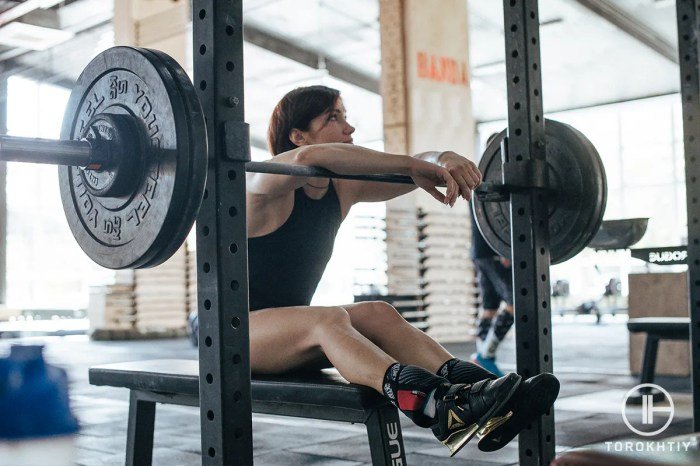
Bar fitness is a versatile training method that can be adapted to achieve various fitness goals. By adjusting the exercises, sets, reps, and weight used, you can tailor your bar fitness routine to focus on strength building, muscle gain, weight loss, or a combination of these goals.
Strength Building
Strength building involves increasing the amount of weight you can lift for a specific exercise. Bar fitness is an excellent way to build strength, as it utilizes compound exercises that engage multiple muscle groups simultaneously.
- Focus on heavy lifting: Choose exercises like squats, deadlifts, and bench presses and gradually increase the weight you lift over time.
- Use lower repetitions: Aim for 3-5 reps per set to challenge your muscles and promote strength gains.
- Prioritize proper form: Maintain correct technique to avoid injuries and maximize muscle activation.
Muscle Gain
Muscle gain requires a combination of resistance training and a calorie surplus. Bar fitness can effectively stimulate muscle growth by providing a challenging stimulus for your muscles.
- Use moderate weight: Select a weight that allows you to perform 8-12 reps per set, aiming for muscle fatigue.
- Increase the volume: Perform more sets and exercises to create a greater muscle-building stimulus.
- Focus on progressive overload: Gradually increase the weight, sets, or reps over time to continue challenging your muscles.
Weight Loss, Bar fitness
Bar fitness can be an effective tool for weight loss by increasing your metabolism and burning calories.
- Combine bar fitness with cardio: Incorporate high-intensity interval training (HIIT) or other cardio exercises to boost calorie expenditure.
- Focus on compound exercises: Compound exercises engage multiple muscle groups, leading to a greater calorie burn.
- Maintain a calorie deficit: Consume fewer calories than you burn to create a calorie deficit and promote weight loss.
Adjusting Workouts Based on Individual Needs and Progress
It’s crucial to adjust your bar fitness workouts based on your individual needs and progress. Factors to consider include:
- Fitness level: Beginners should start with lighter weights and fewer reps, gradually increasing the intensity as they progress.
- Goals: Tailor your workouts to align with your specific fitness goals, whether it’s strength building, muscle gain, or weight loss.
- Recovery: Allow sufficient rest and recovery time between workouts to prevent overtraining and promote muscle growth.
- Listen to your body: Pay attention to your body’s signals and adjust your workouts accordingly. If you experience pain or discomfort, stop and consult with a healthcare professional.
The Role of Nutrition in Bar Fitness

Proper nutrition is essential for optimal performance in bar fitness, just as it is in any other athletic endeavor. By fueling your body with the right nutrients, you can maximize your strength, endurance, and recovery, enabling you to push your limits and achieve your fitness goals.
Balanced Diet Plan for Bar Fitness Enthusiasts
A balanced diet plan for bar fitness enthusiasts should prioritize nutrient-dense foods that provide the energy and building blocks necessary for muscle growth, repair, and recovery.
Bar fitness is a versatile training method that can be tailored to various fitness goals. Whether you’re aiming for strength, endurance, or flexibility, bar exercises can help you achieve your desired results. If you’re interested in learning more about bar fitness and how to incorporate it into your routine, consider consulting a master fitness trainer who can provide personalized guidance and ensure you’re using proper form.
A qualified trainer can help you develop a safe and effective bar fitness program that aligns with your specific needs and fitness level.
Macronutrients
- Carbohydrates: Carbohydrates are your body’s primary source of energy, especially during intense workouts. Opt for complex carbohydrates like whole grains, fruits, and vegetables, which provide sustained energy and are rich in fiber.
- Proteins: Protein is essential for muscle growth and repair. Aim for a moderate intake of lean protein sources such as chicken, fish, beans, lentils, and tofu.
- Fats: Healthy fats are crucial for hormone production, cell function, and energy storage. Include sources like avocados, nuts, seeds, and olive oil in your diet.
Micronutrients
- Vitamins and Minerals: Vitamins and minerals play a vital role in various bodily functions, including energy production, muscle function, and immune system support. Ensure you are consuming a variety of fruits, vegetables, and whole grains to meet your micronutrient needs.
Role of Supplements in Supporting Bar Fitness Training
Supplements can play a supporting role in bar fitness training, but they should not be considered a replacement for a balanced diet.
Common Supplements
- Protein Powder: Protein powder can be a convenient way to increase your protein intake, especially after workouts.
- Creatine: Creatine is a naturally occurring compound that helps increase muscle mass and strength.
- BCAAs (Branched-Chain Amino Acids): BCAAs are essential amino acids that play a role in muscle protein synthesis and recovery.
- Glutamine: Glutamine is a conditionally essential amino acid that supports muscle recovery and immune function.
It is important to consult with a healthcare professional or registered dietitian before starting any new supplement regimen.
Safety and Injury Prevention in Bar Fitness

Bar fitness, while offering numerous benefits, carries inherent risks if safety precautions are not prioritized. Understanding common injuries and implementing preventive measures is crucial for a safe and enjoyable fitness journey.
Common Injuries in Bar Fitness
Injuries in bar fitness are often associated with improper technique, excessive weight, and inadequate warm-up and recovery. Common injuries include:
- Shoulder Injuries:Rotator cuff tears, impingement syndrome, and labral tears are common due to repetitive overhead movements.
- Wrist Injuries:Carpal tunnel syndrome, De Quervain’s tenosynovitis, and tendonitis can occur due to repetitive gripping and wrist movements.
- Back Injuries:Lower back pain, herniated discs, and spinal stenosis can result from improper form and heavy lifting.
- Elbow Injuries:Tennis elbow (lateral epicondylitis) and golfer’s elbow (medial epicondylitis) are common due to repetitive stress on the elbow joint.
Preventing Injuries in Bar Fitness
Preventing injuries in bar fitness involves a multi-faceted approach:
- Proper Form and Technique:Focus on mastering proper form before increasing weight. Seek guidance from certified trainers or coaches to ensure correct execution.
- Progressive Overload:Gradually increase weight and intensity to allow your body to adapt. Avoid sudden jumps in weight or difficulty levels.
- Warm-up and Cool-down:Dedicate sufficient time to warm up muscles and joints before workouts and cool down afterward. This helps prepare your body for exercise and promotes recovery.
- Rest and Recovery:Allow adequate rest between workouts to prevent overtraining and muscle fatigue. Listen to your body and take rest days when needed.
- Proper Equipment:Use high-quality, properly fitted equipment to minimize the risk of injury. Ensure bars, weights, and other equipment are in good condition.
Importance of Proper Warm-up and Cool-down Routines
Warm-up routines prepare your body for the demands of exercise, increasing blood flow, heart rate, and muscle temperature. They also help improve flexibility and range of motion, reducing the risk of injury.
- Dynamic Warm-up:Focus on movements that mimic the exercises you will be performing, such as light barbell rows, air squats, and arm circles.
- Static Stretching:Hold stretches for 15-30 seconds after your workout to improve flexibility and reduce muscle soreness.
Avoiding Overtraining and Promoting Muscle Recovery
Overtraining occurs when your body is subjected to excessive stress without adequate recovery. It can lead to injuries, fatigue, and plateaus in progress.
- Rest Days:Incorporate rest days into your training schedule to allow your body to recover and rebuild muscle tissue.
- Active Recovery:Engage in low-intensity activities such as walking, swimming, or yoga on rest days to promote blood flow and reduce muscle soreness.
- Nutrition:Consume a balanced diet rich in protein, carbohydrates, and healthy fats to support muscle recovery and growth.
- Hydration:Stay hydrated throughout the day to optimize muscle function and recovery.
Bar Fitness Community and Culture
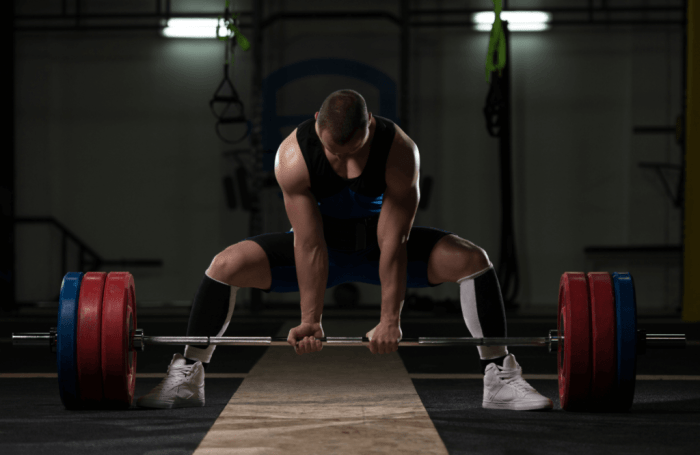
The bar fitness community is more than just a group of people who love to work out. It’s a vibrant and supportive network of individuals who share a passion for pushing their limits and achieving their fitness goals. The culture fosters a sense of camaraderie, encouragement, and a desire to learn and grow together.The community thrives on the shared experience of challenging workouts, the satisfaction of overcoming obstacles, and the joy of celebrating each other’s successes.
This shared experience creates a strong bond among members, who often find themselves cheering each other on and offering support during difficult sets or challenging exercises.
Popular Bar Fitness Events and Competitions
Bar fitness events and competitions provide a platform for members to showcase their skills, test their limits, and connect with others in the community. These events range from local workshops and meetups to large-scale competitions.
- Barbell Club Championships: These competitions test athletes’ strength, power, and endurance across a variety of barbell movements. They often feature events like deadlifts, squats, bench presses, and overhead presses.
- CrossFit Games: While not exclusively focused on barbell training, the CrossFit Games have a significant emphasis on barbell movements. The Games attract top athletes from around the world, showcasing the highest level of bar fitness.
- Strongman Competitions: Strongman competitions are known for their unique and challenging events, many of which involve heavy barbells. These competitions test athletes’ raw strength, power, and grip strength.
Role of Social Media and Online Platforms
Social media and online platforms play a crucial role in fostering a bar fitness community. They provide a space for members to connect, share their progress, and learn from each other.
Bar fitness, with its focus on functional strength and bodyweight exercises, has become increasingly popular. While it might seem worlds away from the glitz and glamour of the Miss France beauty pageant , there’s a surprising connection. Both emphasize discipline, dedication, and the pursuit of a healthy, confident physique.
Bar fitness can help build the kind of strength and agility that would be an asset to any aspiring beauty queen.
- Instagram: Instagram is a popular platform for bar fitness enthusiasts to share photos and videos of their workouts, connect with other athletes, and follow their favorite trainers.
- Facebook Groups: Facebook groups dedicated to bar fitness provide a space for members to ask questions, share tips, and discuss training strategies.
- Online Forums: Online forums like Reddit’s r/weightlifting and r/crossfit provide a platform for in-depth discussions about bar fitness, training techniques, and nutrition.
Last Point
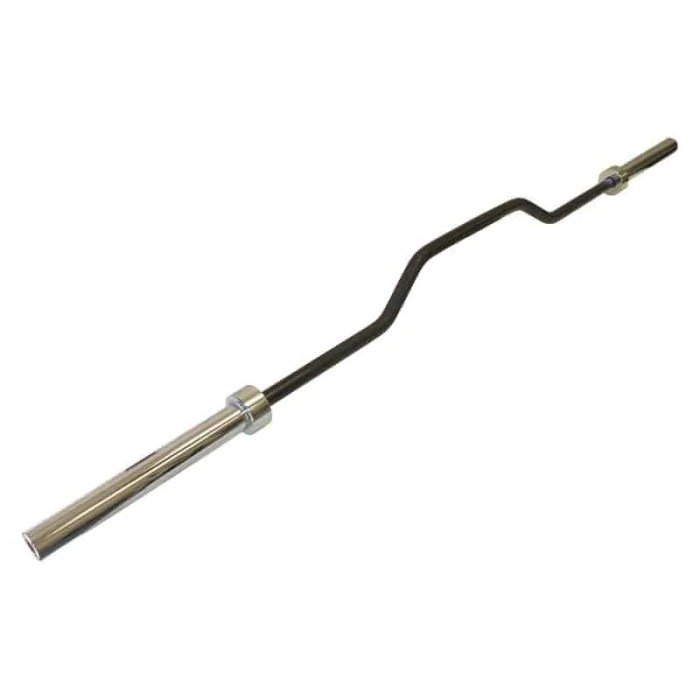
Whether you’re a seasoned athlete or just starting your fitness journey, bar fitness can be a rewarding and transformative experience. With the right knowledge, guidance, and dedication, you can unlock your full potential and achieve your fitness aspirations. Embrace the challenge, learn proper technique, and enjoy the journey of building a stronger, healthier you.
Expert Answers
What are the benefits of bar fitness?
Bar fitness offers numerous benefits, including increased strength, power, and muscle mass. It also improves bone density, enhances coordination, and boosts metabolism.
Is bar fitness suitable for beginners?
Absolutely! Start with basic exercises like squats, deadlifts, and presses using lighter weights and focus on proper form. As you progress, gradually increase the weight and challenge yourself.
What are some common bar fitness injuries and how can I prevent them?
Common injuries include lower back pain, shoulder pain, and knee pain. To prevent these, prioritize proper form, warm up adequately, and listen to your body. Don’t hesitate to consult a qualified trainer for guidance.